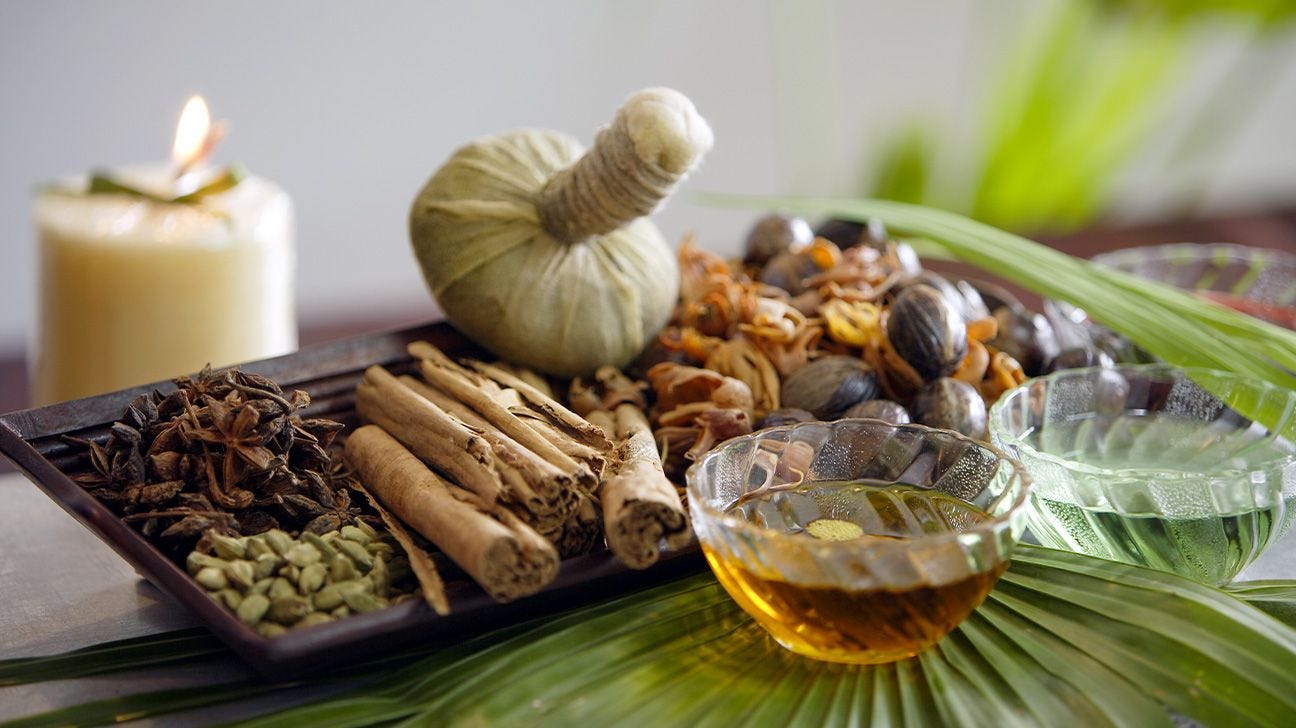The Wonders Of Ayurveda
Written by Shrishti Harish
Before modern medicine became the standard, Ayurveda was a primary system of health and healing in ancient India. This article explores the history and origins of Ayurveda, its core principles, and common Ayurvedic treatments.
“Ayurveda” derives from an ancient language, Sanskrit, meaning life science. It is one of the oldest medical systems in the world and originated in India 5,000 years ago. It is a regimen that firmly believes that everything in life is interconnected. Ayurved is a holistic science that considers wellness as a whole and categorizes it into mind, body, spirit, and social well-being. While the modern medicine system tends to treat the symptoms of a disease, Ayurveda focuses on finding the root cause of the ailment.
When one is affected by an illness, it is caused by an imbalance in the body. To treat such diseases, Ayurveda implements lifestyle interventions, therapies, and remedies to restore that balance in your body. This concept of “being in balance” is a core principle in Ayurveda. According to Ayurveda, “perfect health” is when there is an equilibrium between the body, mind, soul, and social well-being. If any one of these factors is disrupted, the physical body responds as an illness.
A key aspect of maintaining this balance is understanding one’s Prakriti or constitution. Prakriti defines the physical, physiological, and psychological traits of an individual. Identifying one’s Prakriti can aid in making positive lifestyle actions, preventing imbalances, and promoting well-being. This constitution is made up of 3 qualities known as Doshas. The three doshas are Vata, Pitta, and Kapha, and each serves as an energy type to dictate an individual’s emotional strengths and weaknesses. Doshas are formed by the 5 natural elements and influence body processes.
Vata dosha controls the flow of movement in the body and determines the movement of muscles and joints. If an individual displays an excessive amount of vata dosha, it is highly recommended to meditate and have a healthy lifestyle. Pitta dosha is responsible for metabolism, digestion, and hormones. To have a balanced pitta, it is advised to engage in calming activities like yoga and hobbies. Lastly, Kapha dosha is in charge of the structure and lubrication of the body. To combat an irregular kapha, taking essential oils and increasing physical activity have shown to be effective.
Ayurveda offers a variety of treatments to restore balance in the body. The most commonly used are herbal medicine, purification programs, and massage therapy. Herbal remedies consist of plants like turmeric red clover, ginger, and dietary recommendations tailored to one's Prakriti. Panchakarma (purification process) is used to cleanse one’s body through massage and medical enemas. Massage therapy consists of using essential oils to improve circulation and stress reduction. To conclude, Ayurveda is an amazing alternative to modern medicine because of its holistic approach to health and ability to restore balance within the body, mind, and spirit through natural herbal remedies.
References:
https://health.clevelandclinic.org/what-is-ayurveda
Written by Shrishti Harish from MEDILOQUY


